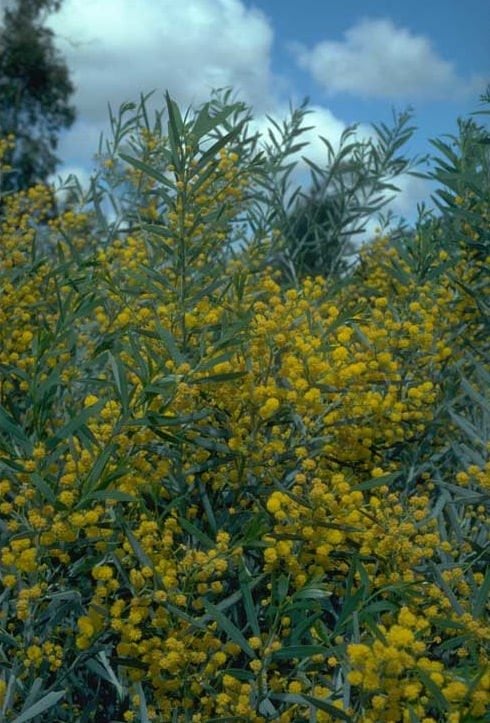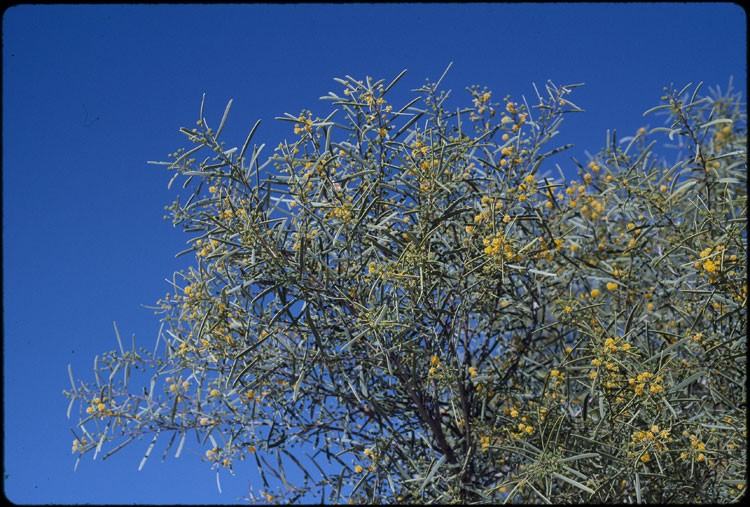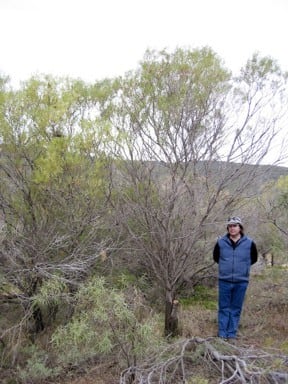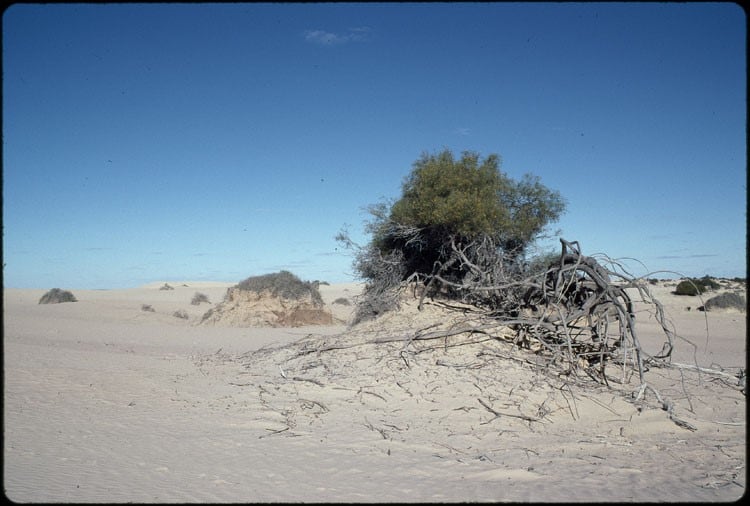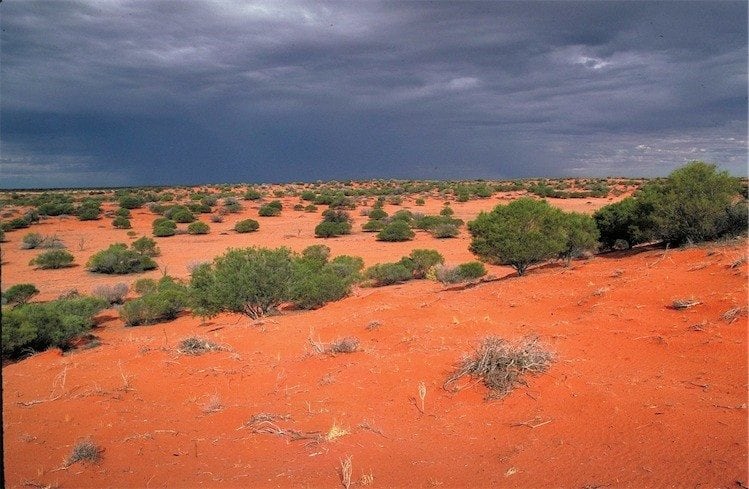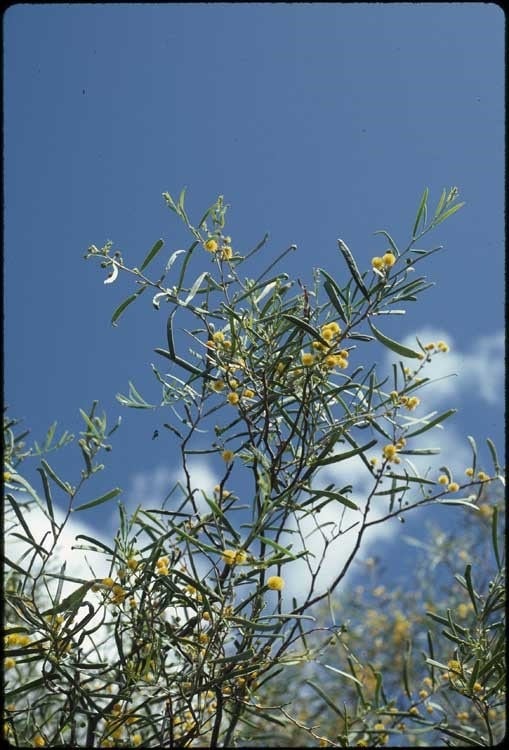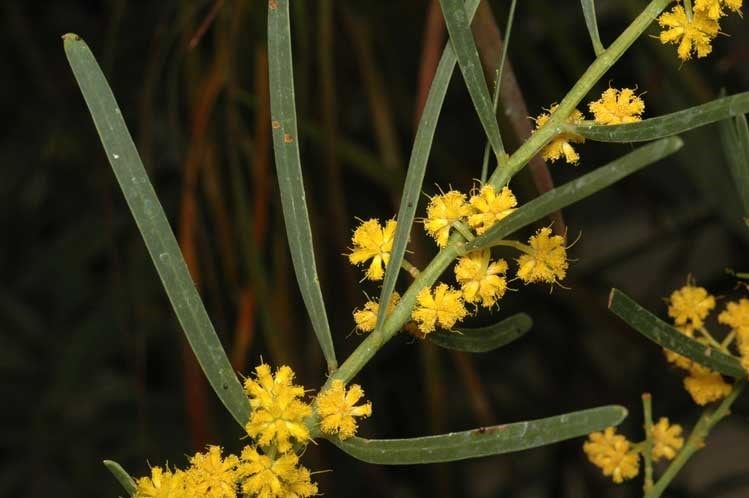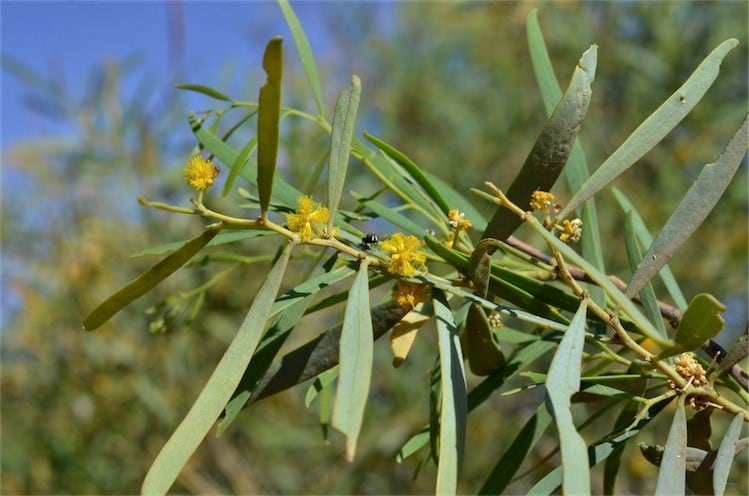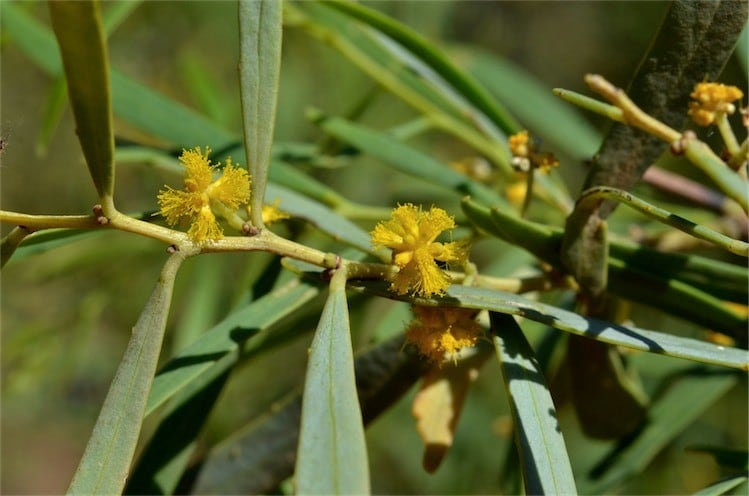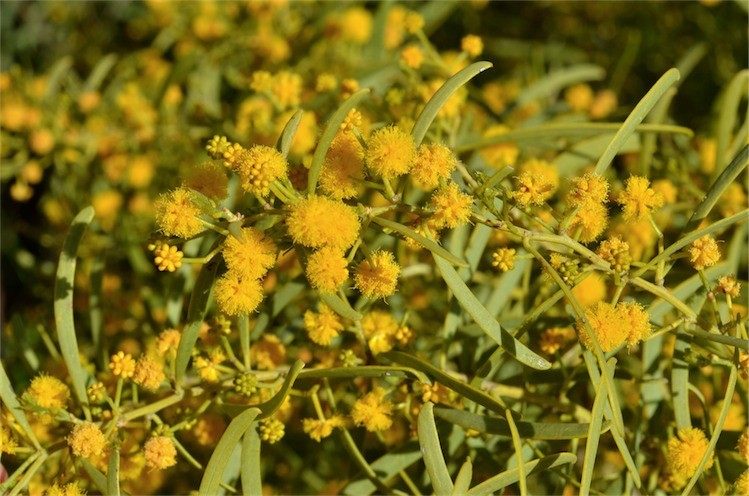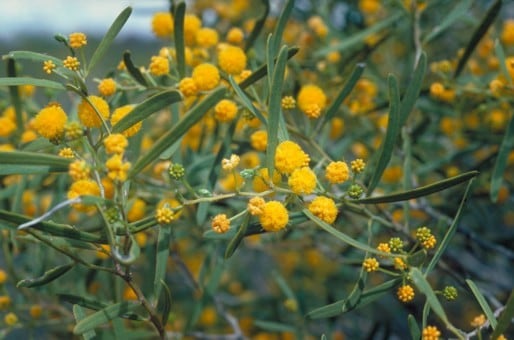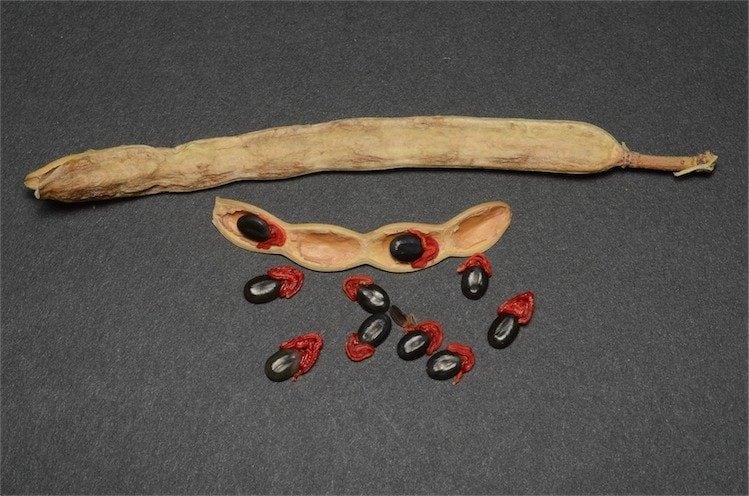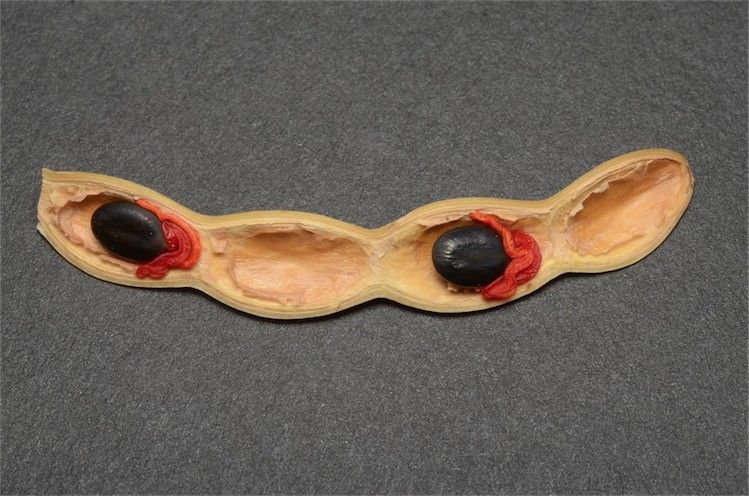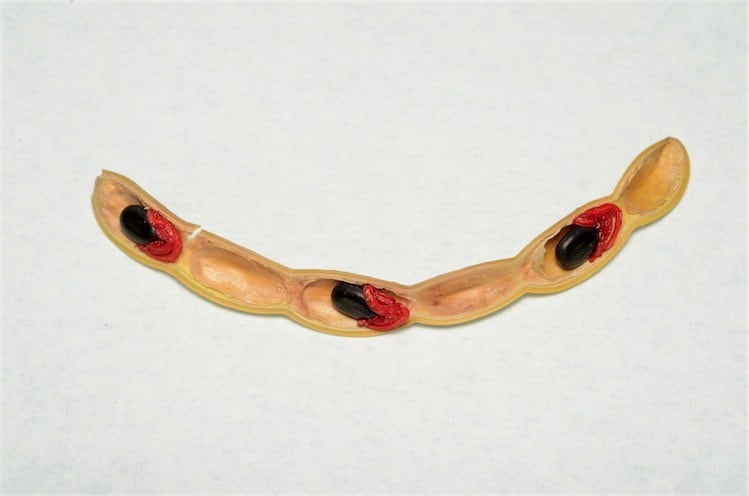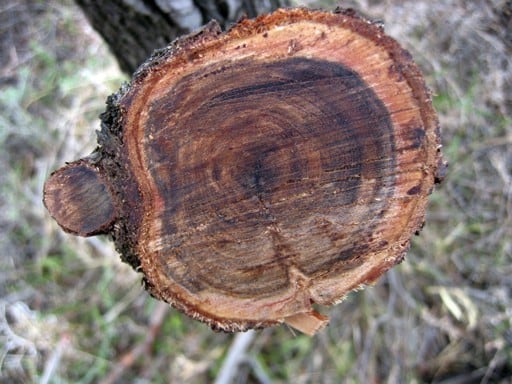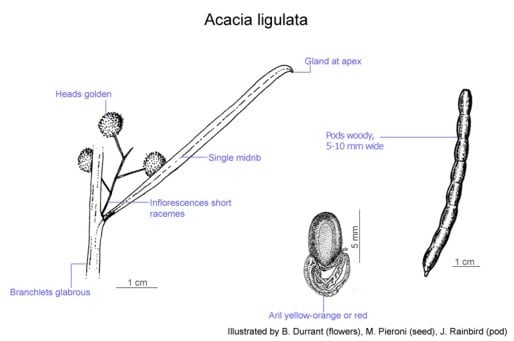Acacia ligulata A.Cunn. ex Benth.
WATTLE
Acacias of Australia
Common Name
Dune Wattle, Sandhill Wattle, Small Cooba, Umbrella Bush Wirra and others
Family
Fabaceae
Distribution
Widespread in central and southern arid Australia, occurring in all mainland states.
Description
Dense shrub or tree 2–3 m high, normally glabrous. Branchlets light brown, sometimes slightly scurfy and distinctly yellow-ribbed. Phyllodes commonly patent, usually linear to narrowly elliptic, (2.5–) 3–7.5 (–9) cm long, (2–) 4–14 mm wide with l:w = 5–19, often uncinate, with recurved to straight mucro, usually thick (therefore ±coarsely wrinkled when dry), green, infrequently glaucous, 1-nerved; glands commonly 3, with lowermost 2–20 mm above pulvinus, and distal glands smaller with one at base of mucro. Inflorescences 2–4 (–6)-headed racemes; raceme axes 3–20 (–30) mm long; peduncles 2–10 (–15) mm long; heads globular, subdense, 19–24-flowered, deep golden. Flowers 5-merous; sepals united into a truncate calyx. Pods patent-erect, commonly ±straight-sided or slightly constricted between seeds, to 9 cm long, 5–10 mm wide, thick, woody, light brown with often a paler median stripe. Seeds longitudinal, oblong-elliptic, normally 4–6 mm long, shiny, brown; aril yellow-orange or red.
Habitat
Usually grows in sand, often in mulga and mallee communities.
Specimens
W.A.: 4 km S of Menzies towards Kalgoorlie, B.R.Maslin 1931 (AD, DNA, K, MEL, NSW, PERTH). N.T.: 57.9 km SW of Amaroo HS, G.Chippendale 1410 (BRI, DNA, PERTH). S.A.: 16 km NW of Ceduna, N.Hall H80/65 (BRI, PERTH). Qld: 11.3 km W of Dynevor Downs, L.Pedley 2466 (PERTH). N.S.W.: Menindee aerodrome, 16 June 1955, E.F.Constable s.n. (DNA, NSW). Vic.: 22.3 km N of Speed on the Sunraysia Hwy, N.Hall H80/39 (NSW, PERTH).
Notes
A variable member of the ‘A. bivenosa group’ which has historically been confused with A salicina, fide A.R.Chapman & B.R.Maslin, Nuytsia 8: 266 (1992). It is closely related to A. bivenosa and in places the two seem to hybridise. Acacia bivenosa is commonly distinguished by its 2-nerved phyllodes and normally indeterminate racemes, usually growing out. However, A. bivenosa sometimes has 1-nerved phyllodes and A. ligulata is usually distinguished from these plants by its thicker phyllodes with l:w more than 5 and mucro recurved to straight, peduncles normally less than 10 mm long and woody pods. Some S.A. specimens have atypically narrow phyllodes (2–3 mm wide) which resemble those of A. cupularis. Plants from the type locality at Shark Bay, W.A., resemble the closely related A. rostellifera. They are characterised by short (2.5–3.5 cm), narrowly elliptic-oblanceolate, thin, puncticulate phyllodes, small inflorescence and seeds, and aril which partially sheaths the end of the seed. In W.A. A. ligulata forms putative hybrids with A. sclerosperma subsp. sclerosperma and A tysonii.
The leaves and branches of this species are used traditionally by N.T. aborigines as a diaphoretic for several complaints, including certain disturbances of the nervous system, fide, Aboriginal Communities of the Northern Territory, Traditional Aboriginal Medicines in the N. Terr. of Australi a 16–19 (1993) (Conservation Commission of the Northern Territory of Australia, Darwin).
FOA Reference
Data derived from Flora of Australia Volumes 11A (2001), 11B (2001) and 12 (1998), products of ABRS, ©Commonwealth of Australia
Author
A.R.Chapman, B.R.Maslin
Minor edits by J.Rogers
This identification key and fact sheets are available as a mobile application:
URL: https://apps.lucidcentral.org/wattle/
© Copyright 2018. All rights reserved.
